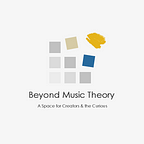The Usefulness of Chromatic Approach Chords
As the name suggests, these are chords that approach a target chord (that being a tonic chord or any other), by a movement of a half-step either from above or below. Normally, the approach chord will be of the same quality as the chord it is approaching. For instance, a minor chord will chromatically approach another minor chord, while a major seventh will approach another major seventh, and so on. But you don’t have to follow this “rule” and instead let your ears be the judge:
Chromatic approach chord from above
Chromatic approach chord from bellow
Chromatic approach chord with different chord quality from target chord
These chords are also commonly used as passing chords, meaning that they will last for a short period of time, although you can use these for as long as you like and give them the importance you wish. Because passing chords are often of the same quality as the target chords, all the notes resolve in parallel motion to the target chord. On some occasions you may feel some tension relief after a chromatic approach chord is used to move towards its target.
In a way, this resembles the dominant chord that creates tension only to resolve to a tonicized chord. But a chromatic approach chord may not have any tension within it and, in fact, it can be very stable sounding. So, in a sense, approach chords can be used not to replace the dominant chord function but to add extra color to the harmonic progression, either as a passing chord or not.
Make sure to visit the blog @ Beyond Music Theory
